
While knitting is therapeutic and creative, it can also be an expensive craft. But knitting doesn’t have to break the bank. In this post I’ll share my nine favourite tips to save money on yarn and knitting supplies.
Some of these tips are fairly easy and obvious while others require more DIY, creative thinking and elbow grease.
How to Save Money on Yarn Video
To discover these thrifty knitting tips, continue reading or watch the video above!
1. Make Your Own Knitting Needles
If you’re on a budget then consider turning everyday objects into knitting needles.
Chopsticks, pencils, kebab skewers – these make great temporary needles!
To transform takeaway chopsticks and skewers from eating utensils to knitting tools, we’ll need some fine grit sandpaper.
Chopsticks
For chopsticks, I’ll sand away any splinters and snags with 800 grit sandpaper. Once it’s smooth I’ll do a final sanding with 1000 grit sandpaper.
Standard takeaway chopsticks are roughly equivalent to a 5.5-6mm needle.
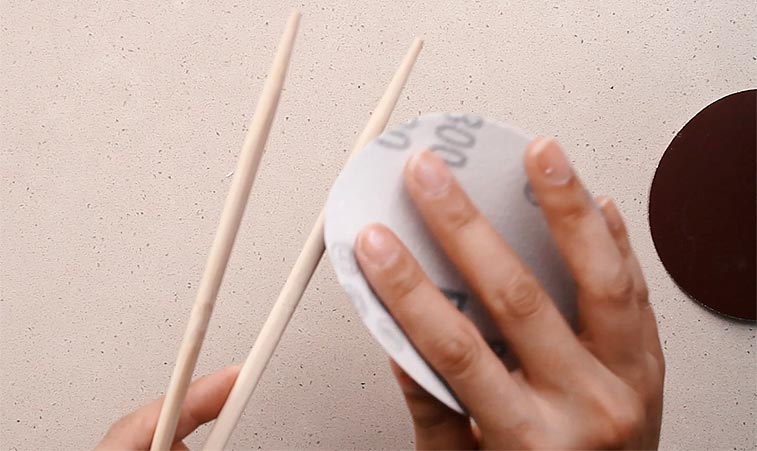
Kebab Skewers
Because kebab skewers are so thin, I’ll start with 1000 grit sandpaper. Sand until they’re buttery smooth.
Kebab skewers are roughly equivalent to a 3.25mm needle, which is great for heavy-sock weight or light sport-weight yarns.
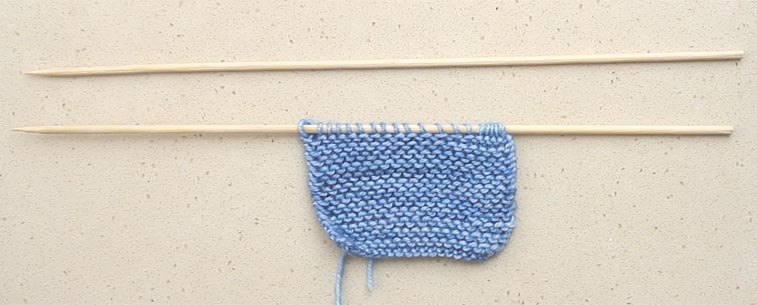
Pencils
Turning standard HB pencils into needles couldn’t be easier!
Because most pencils are quite smooth, no sanding is needed.
Instead, I apply a coat of nail polish to cover the lead tip. This prevents the lead from staining the yarn.
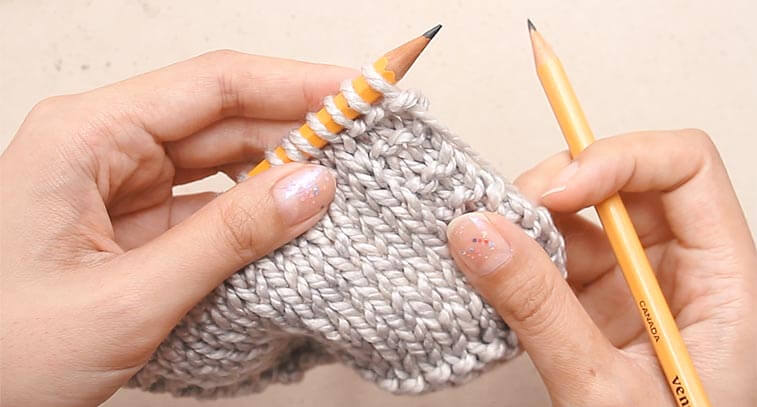
To prevent stitches from falling off the pencil, add an eraser top at the ends. Then, cast on!
Pencils are roughly equivalent to a 7-7.5mm needle, perfect for chunky weight yarn.
2. Use Your Library
Many libraries have large collections of knitting pattern books and knitting magazines like Vogue Knitting and Interweave Knits.
New issues of magazines may have waitlists, so consider combing through their back issues. I’ve found many gems in older knitting magazines.

A lot libraries in large cities also allow you to borrow e-books. To see if your library offers digital lending, head to your library’s website and look for something related to e-books.
It might be called “eLibrary” or “Downloads.” Clicking on this should lead you to “Hoopla”, “OverDrive” or “Libby”. These are digital libraries.
Use your library card and start browsing!
3. Dye Your Own Yarn
A great way to save money on yarn is to dye it yourself!
It’s not as hard as it seems and you’ll save a lot of money on yarn with this DIY approach.
I like to use food colouring to dye because it’s food-safe, so you can use your own pots and kitchen utensils. No need for new supplies.
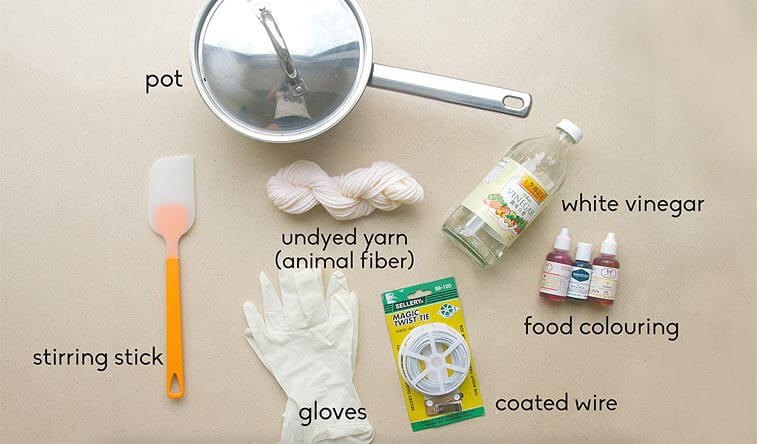
To dye yarn with food colouring, you’ll need:
- pot
- food colouring
- white vinegar
- un-dyed or white/cream yarn made of animal fiber (ie. wool, alpaca)
- large bowl
- detergent
- gloves (optional)
- coated wire (optional)
Where to Buy Un-Dyed Yarn?
My favourite place to buy un-dyed yarns is the online retailer Knit Picks. They have a huge selection of un-dyed yarns at great prices, from sock weight to bulky weight, from wool to alpaca, nylon, cotton and more.
Preparing the Yarn
First, the yarn must be rolled into a hank. This helps the food colouring penetrate the yarn evenly. Watch the video below on how to roll a ball of yarn into a hank.
1. Soak the hank or hanks into a bowl of room temperature water for at least 30 minutes
2. Fill a pot with enough water to cover the hanks you will dye

3. To the pot, add one tablespoon of vinegar for every cup of water. For example, if you have 4.5 cups of water in the pot, then add 4.5 tablespoons of white vinegar.
4. Add the food colouring to the pot. You can add as much or little as you like. The strength of colour for each food colouring brand varies, so you’ll need to experiment. I used about 20 drops of food colouring for my hank of yarn.
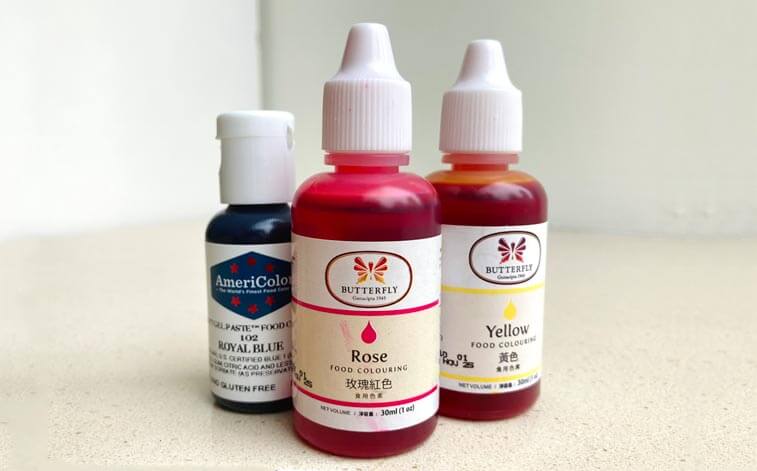
5. Bring the pot to a boil and then lower the temperature to a gentle simmer. Remove the hank of yarn from its soaking bowl. Squeeze out excess water and drop the hank into the pot.
6. Allow the hank to gently simmer in the pot for 15-20 minutes or until the water is clear. This indicates that the yarn has soaked up all the food colouring. Stir occasionally to prevent the hank from sticking to the bottom of the pot.

7. Take the pot off the heat and allow the water to gradually cool to room temperature.
8. Rinse the yarn with some detergent. Once the water is clear of dye and detergent, gently squeeze the water from the hank and hang to dry.

9. Once dried, the yarn is ready to be rolled into a ball and used for knitting!
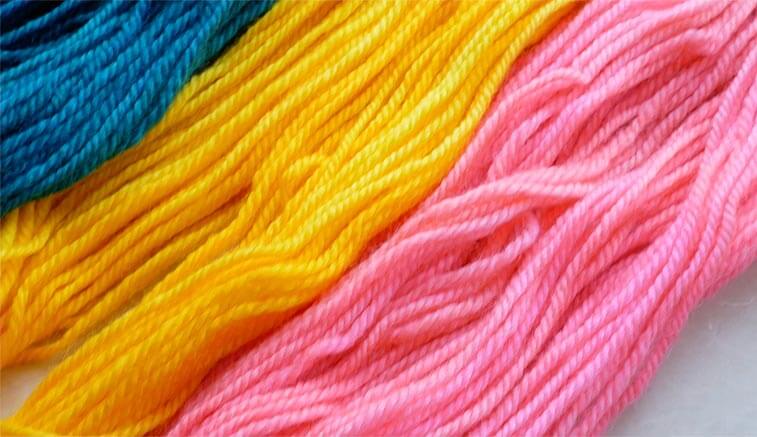
4. Never Pay Full Price
If you shop at Michael’s, Hobby Lobby or Joann Fabrics, then never pay full price.
These are the three big craft chains in the US. Of the three, only Michael’s is available in Canada.
For knitters outside North America, this tip sadly doesn’t apply to you. I’m sorry!

These three retailers always have coupons floating around. If you download their respective apps you’ll see all available coupons in real time.
At the time of writing, Michael’s has a teachers, military and seniors discount of 10-15%. You just need to show your ID at checkout.
Joann’s has a 15% discount for teachers, military, healthcare workers, 4H and girl scouts. You just need to enrol in their rewards program.

So knitters of North America, take advantage of these coupons and never pay full price for yarn and knitting tools!
5. Repurpose Old Sweaters
One of the best ways to save money on yarn is to search for old sweaters at thrift stores and unravel them for the yarn.
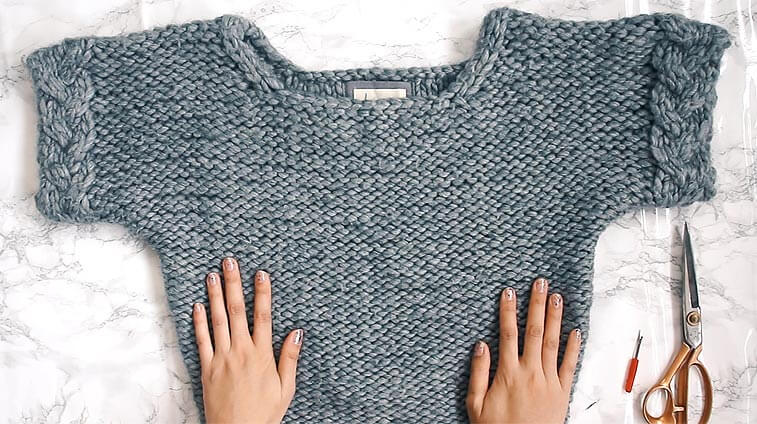
A single adult sweater can yield enough yarn for three or even four hats, or an entire sweater and pant set for a baby!
When hunting for sweaters, look for natural materials like wool, alpaca, silk or cashmere. Very fine sweaters may be difficult to unravel, so stick with a sock weight yarn or heavier when I’m looking to upcycle.
Once you’ve purchased a sweater, un-seam the sleeves and any other pieces that are seamed together.
Then unravel the individual pieces. Personally, I like to roll the yarn into a hank so I can wash out some of the kinks in the yarn.
I’ll let the hank soak in lukewarm water with some detergent, then rinse and hang to dry.
The finished yarn is less curly, easier to knit with, and ready for cast on!
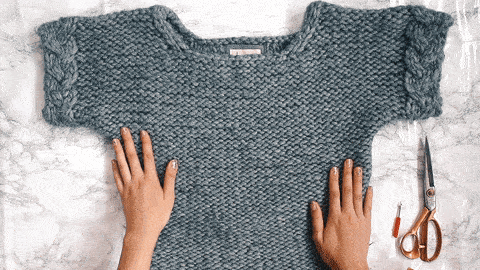
6. Get Social IRL
Join a local knitting, crochet or fibre arts meet up. Sometimes these are called “knitting guilds.”
Many have swap meets where you can exchange yarn and tools with other crafters.
A lot of knitters are happy to de-clutter their yarn collection, so keep an eye out. Someone else’s yarn hoard could be your treasure!
To find a local group, google “knitting meetup” and the name of your city and see what results come up.
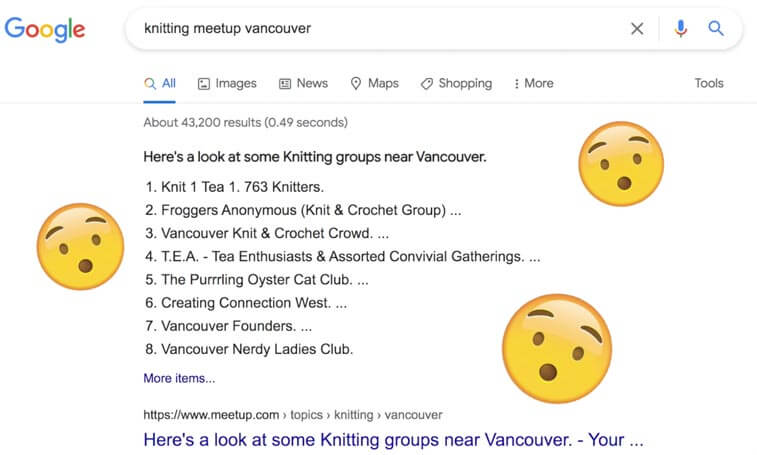
A quick search shows that the city of Vancouver, BC has a handful of in-person knitting groups to choose from!
7. Let’s Get Digital
Join Ravelry if you haven’t already.
It’s totally free and it’s like Facebook for knitters. On Ravelry, you can shop, sell or exchange yarns with other users.
Best of all you can usually buy yarns for much less than what you’d pay retail.
To see how this works, watch the video below or read on.
On the Ravelry homepage, click on “Yarns” and then type in the name of the yarn you’re looking for (in my case, “Malabrigo Rios”). Click on the name of the yarn.
This will lead you to a page all about the yarn. From the top menu click on “Stashes.” The page displays all the users on Reddit who have the yarn in their stash.
Then, click on “Filter by Status” on the top menu, and select “Will Trade or Sell.” You’ll see all the users who are willing to trade or sell their yarn.
From this pool you can search the specific colorway you’re looking for or the number of hanks you need. Once you’ve found what you’re looking for, message the user and start negotiating!
Another online option is Reddit.
Reddit is a website that’s like a giant online forum. On Reddit there are thousands of “subreddits” or forums dedicated to topics as varied as stock trading, mountain climbing, dog training and, of course, knitting!
The subreddit r/yarnswap is a place specifically for users to exchange yarns.
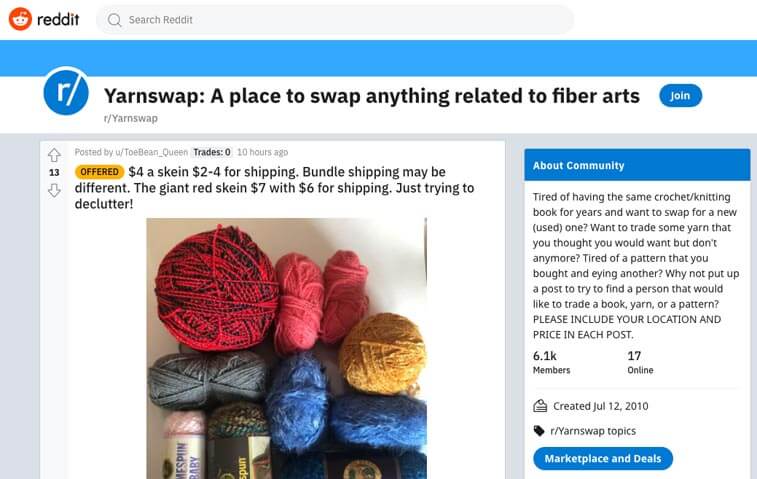
Simply, create a free account on Reddit, head to the r/yarnswap subreddit and browse the yarns on offer. If you see something you like, message the user and negotiate!
Please note that you can also sell and exchange yarns on both Ravelry and Reddit in addition to buying.
8. Transform Your Yarn
If you need a heavier weight yarn, but you’ve only got sock or sport weight around, then combine these thinner yarns to create a heavier weight yarn!
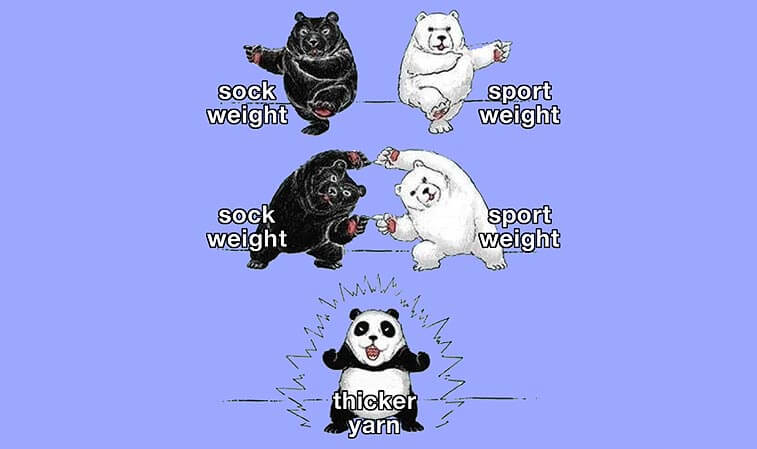
To do this, hold two, three or even four strands together and knit them as if they were one big strand of yarn. There’s no need to twist them together. Just hold them in a bunch and knit.
Et voila! You’ve just created a thicker yarn!
Use the same yarn held together or combine two different colours to create a marled yarn, like the one below.
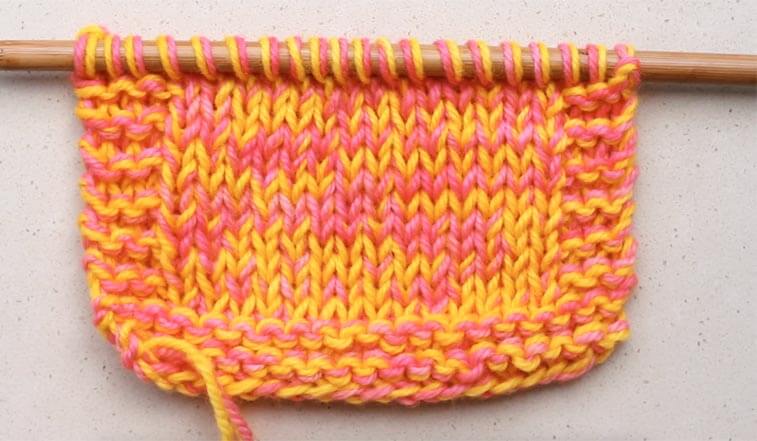
The opposite holds true too. If you have thicker yarn with more than one ply, you can slowly untwist the plies and knit with a single ply or two plies held together.
Here I’ve untwisted this 4-ply super chunky yarn so that I can knit with just one ply.

Untwisting the plies requires a lot of patience, but it can be done while watching TV or chatting with a friend. It’s fairly mindless work.
With some untwisting, I’ve turned a 4-ply chunky weight yarn into a one-ply light worsted weight yarn. Transformation complete!

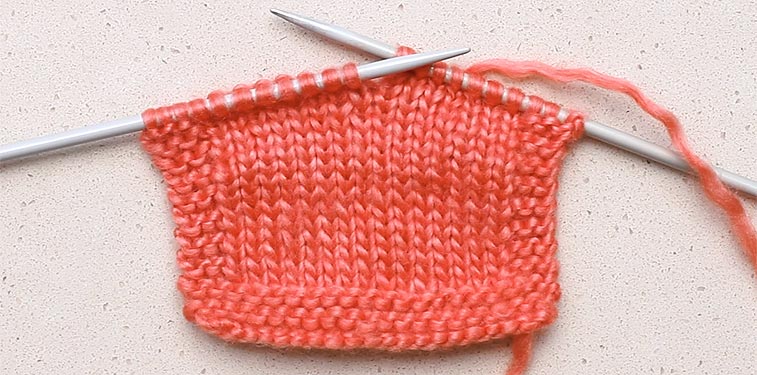
The next time you’re looking to save money on yarn, look to your stash and see if existing yarn can be transformed by combining or un-twisting.
9. Practice Mindfulness
Before going into a yarn store, with all its tempting yarns and needles and gorgeous finished projects, have a purpose and a plan for going inside.
Otherwise you risk buying random balls of yarn just because they’re beautiful and tempting.
These yarns end up collecting dust because you didn’t have a project for them. You didn’t have a purpose and plan.
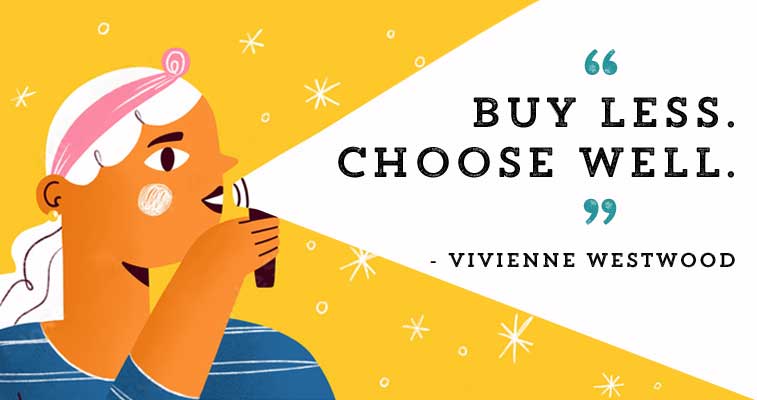
I may sound like I’m lecturing, and that’s because I’m actually talking to my younger self! I have boxes upon boxes of yarn because my younger-self was an impulsive shopper with a yarn addiction.
I’ve since learned from my mistakes and am slowly working through my mountains of yarn.
Nowadays, this is what I do before making a purchase. I write down a list of things I want to buy and then sleep on it for a few days.

Then I return to my list and decide whether I still want or need those things. Oftentimes, I’ve forgotten a lot of items on my list! This is a good sign that they weren’t necessary to begin with.
So, give yourself the time and space to reflect on potential purchases or projects.
This mindfulness prevents unnecessary purchases, and the items you do buy will be more meaningful and cherished.



Loving your tutorials! Thanks for sharing
This is great advice for us crocheters, too! Thank you.
My favorite way to save money: not to buy yarn! I posted on my local “freecycle” and “buy nothing” groups that I was relearning how to knit and asking if anyone has yarn I could have. I got bags and bags. I passed some along, and of course don’t necessarily have enough for a sweater, but I am trying to work with what I have and choose projects to fit rather than the other way around.
I’ve also seen yarn for sale at Goodwill–another great way to save!
Thank you so much! I’m a total newb to knitting and I’m excited about try it out, but was getting a little overwhelmed and wary of spending $$$ in the beginning in case I decide it’s not for me. Thanks for providing all this useful and helpful info for us beginners!!
Really like how clear your videos and instuctions are, and nice and slow for clutzes!
But I don’t see anything re finishing off, and weaving in. Esp need for baby cap knit on round and double pointed needles.
thanks
Just love your tutorials! I wish you would add more how-to patterns. By far the best knitting teacher.